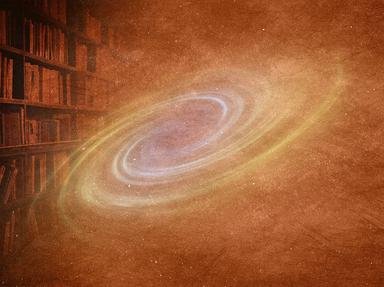Quiz Answer Key and Fun Facts
1. This 17th century bout began as the two participants entered the ring. In the blue corner was Christiaan Huygens, a Dutch scientist, who argued that light was a wave. Which scientist, who believed light to be a particle, was in the red corner?
2. In the pre-match press conference, Newton put forward some convincing arguments for his particle theory. Which word did Newton continuously use to describe these particles of light?
3. There was some pre-existing tension to this contest as Newton and Huygens also disagreed over the way light behaved in a material that was more dense than air. With reference to air, which of the following best describes Newton's theory of the behaviour of light?
4. In this confrontation over whether light was a wave or a particle, the bookies had Newton as a clear favourite to win over his opponent, Huygens. Why was this?
5. With the crowd behind Newton, he began to pull ahead. However, assistance was given to Huygens by a fellow scientist. This assistance came in the form of the double slit experiment. Which scientist was behind this famous experiment?
6. The people in the crowd could hardly believe their eyes as the double slit experiment demonstrated two wave properties of light. One of these wave properties was diffraction. What was the other?
7. Ding ding! Round one was over and Huygens' wave front theory became widely accepted in the world of science. Originally thought to be a longitudinal wave, light was proven to have the same speed as all electromagnetic waves in a vacuum and so was shown to be a transverse wave. Which scientist proved that all electromagnetic waves travelled at the speed 3 x 10^8 m/s?
8. In round two of the confrontation to decide whether light was a wave or a particle, Newton now began to fight back. The photoelectric effect proved that light could behave as photons - an idea more consistent with the theory that light was a particle. When these photons hit a metal surface, what could be emitted?
9. After the tremendous blows dealt to Newton by his opponent (Huygens) in the first round it meant that he was only able to recover with help from his corner. Which scientist was responsible for explaining the photoelectric effect, thus winning a Nobel Prize and supporting Newton's idea that light was a particle?
10. So, where does this leave us? Is light a wave or a particle? It went to a judge's decision and in the end it was up to one judge to deliver the result. The answer is that it is both! A draw! Which scientist suggested that all subatomic particles could show what he called "wave-particle duality"?
Source: Author
doublemm
This quiz was reviewed by FunTrivia editor
crisw before going online.
Any errors found in FunTrivia content are routinely corrected through our feedback system.
